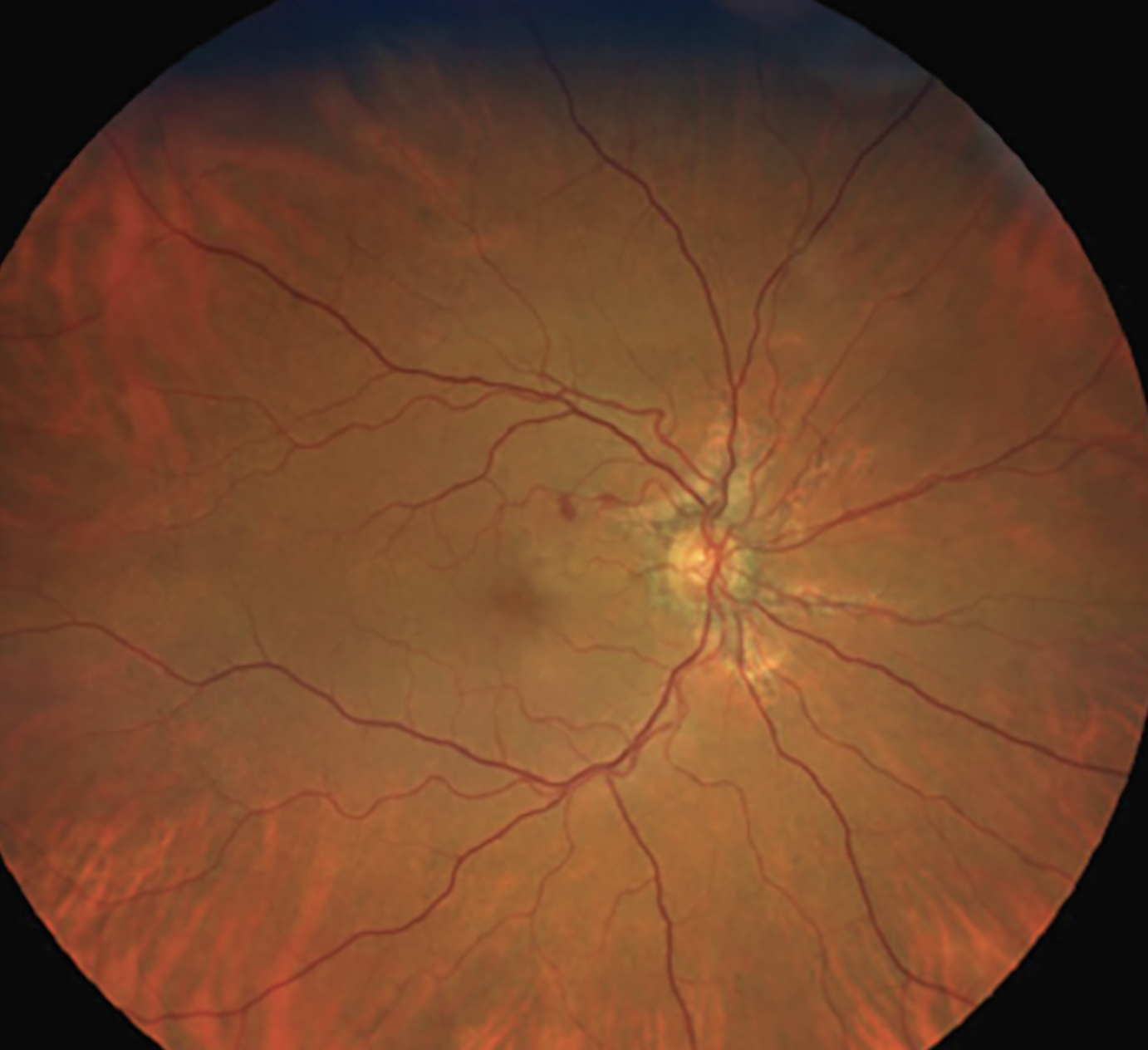 |
Q:
A patient presented to me with angioid streaks and no systemic diagnosis. I know the importance of diagnosing angioid streaks and monitoring for a potential choroidal neovascular membrane (CNVM), but should eyecare providers be further investigating systemic diagnoses related to the ocular findings?
Angioid streaks can be idiopathic or related to systemic diseases that can cause significant morbidity and even death. “The goal is to provide the patient with the best ocular and systemic care, so further testing is essential,” says Caitlynn Estevez-Averhart, OD, an ocular disease resident at the Tuscaloosa Veterans Affairs Medical Center in Tuscaloosa, AL. “These patients are at risk for early death from the same disease process elsewhere in the body.”
Angioid streaks radiate from the optic disc, which result from breaks in a weakened Bruch’s membrane. New blood vessels can grow and break through the compromised choroid, causing a CNVM. “It is crucial to note the presence of angioid streaks and monitor these patients closely,” Dr. Estevez-Averhart adds. “CNVM can cause permanent vision loss.”
Conditions associated with angioid streaks include pseudoxanthoma elasticum (PXE), Ehler-Danlos, Paget’s disease and sickle cell; cases can also be idiopathic. These entities are known as the PEPSI conditions.
 |
|
Angioid streaks associated with PXE. Click image to enlarge. |
Differentials
PXE is the most common disease associated with angioid streaks. If undiagnosed and untreated, results can be deadly. This genetic disease causes the accumulation of minerals and fragmentation of elastic fibers in the skin, Bruch’s membrane and the innermost layer of the blood vessels. Referrals to dermatology, cardiology and gastroenterology are most appropriate to confirm PXE as a diagnosis, and the goal is to prevent spontaneous hemorrhaging in the GI system and early heart disease. It is important to not only examine the eye itself but also perform an external examination of the patient. A common PXE finding is a subtle plucked-skin appearance on the neck, which is pathogenic for pseudoxanthoma. Dermatology can perform a biopsy of nodules which will show a thickening of the elastic fibers for a confirmatory diagnosis.
Paget’s is a chronic bone disease causing arthritis, bone deformities and fractures. Biopsies, lab tests and X-rays can confirm the diagnosis. The X-rays show increased bone density and deformities. Alkaline phosphatase is usually included in a comprehensive metabolic panel and a liver panel to monitor bone and liver disorders. Levels will be elevated in Paget’s disease.
Sickle cell is an inherited red blood cell disorder where hemoglobin is abnormal. These sickled blood cells can clog small vessels and cause organ damage, pain in extremities and strokes. Diagnosis is made with a blood test called Sickledex. Case history and patient demographics can determine if further testing is necessary.
Ehlers-Danlos is the least common condition associated with angioid streaks. This group of connective tissue disorders is often noticed first in children and can cause symptoms ranging from mildly loose joints to hypermobility and weak muscle tone that delays motor development. Proper diagnosis is made with genetic testing.
Angioid streaks and peau d’orange can be ocular findings without a related systemic diagnosis. Angioid streaks can be idiopathic and ultimately a diagnosis of exclusion.
Takeaways
Eyecare providers are well-versed in monitoring angioid streaks and potential complications such as CNVM. We can directly visualize the damage to the elastin layer in our retinal exam, so we are often the first physicians to raise the red flag. However, ensuring that the patient gets further testing and specialty care is the vital next step to potentially extending the lives of these angioid streak patients.
“Ordering blood work and further systemic testing is often not part of regular day-to-day primary eye care,” Dr. Estevez-Averhart says. “It is our responsibility as eyecare professionals to advocate for our patients.” Once the tests are ordered, be sure to follow through, make sure the patient gets the studies done in a timely manner and document everything in detail.
Dr. Ajamian is board certified by the American Board of Optometry and serves as Center Director of Omni Eye Services of Atlanta. He is vice president of the Georgia State Board of Optometry and general CE chairman of SECO International. He has no financial interests to disclose.

